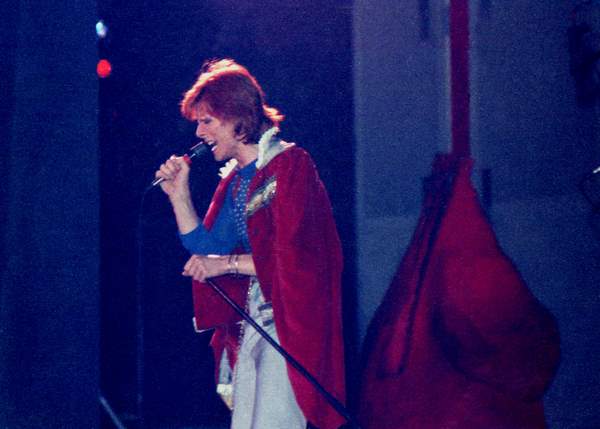What made the 1970s so good for music?
In the three iterations of Rolling Stone’s ‘Top 500 Albums of All Time’, the 1970s have consistently been the decade with the highest number of albums featured on the list, never dropping below 150. Of course, there is far more to musical quality than an ‘objective’ album ranking, but there is no denying the prestige that the 1970s have in the industry. But what makes this decade better for music than the decades that have come before or after?
First and foremost, the musicians of the 1970s were able to build on the countercultural revolutionary experimentation and sacrifice of those of the 1960s. The boundaries of musical genres had been pushed and definitions blurred beyond recognition, making the 70s fertile territory for those that would have been called radical in the previous decade. In other words, the wacky and wonderful innovations of the 1960s became the musical norm of the 1970s.
Grounds for bigger and bolder musical innovation were catalysed by the introduction of new technologies
One of the most prominent of these was David Robert Jones, who would eventually be known by a much more famous name, David Bowie. Bowie, who was catapulted to fame with the release of Space Oddity (1969), recognised that the time was ripe to make experimentation mainstream and achieved this with the critically acclaimed albums Hunky Dory (1971) and The Rise and Fall of Ziggy Stardust and the Spiders from Mars (1972). Both embodied the experiments of the 60s, with Hunky Dory paying homage to 60s musical icons Bob Dylan and The Velvet Underground’s Lou Reed, and Ziggy Stardust building on The Beatles’ Sgt. Pepper’s Lonely Hearts Club Band (1967) to flesh out and popularise the idea of a concept album.
The grounds for bigger and bolder musical innovation were catalysed by the introduction of new technologies that affected music consumption and production. Cassette players began using Dolby’s Noise Reduction System in 1970, making albums easier to buy, store, and transport. This resulted in an increase in money flowing into the industry allowed for the development of new production technologies, especially electronic instruments.
The invention of the synthesiser was largely overlooked in the 60s, but the increased popularity of electronic music in the 70s meant that its potential could finally be realised. An entirely new genre, synth-pop, came about as a result and underlined the music of Bowie, Kraftwerk, and Donna Summer.
Prog rock entered its golden age with the release of The Dark Side of the Moon
Synthesisers and electronic instruments also led to the popularisation of disco and funk, two genres that would define the decade. 1978 saw the release of disco’s two most iconic tracks, Gloria Gaynor’s ‘I Will Survive’ and The Bee Gees’ ‘Stayin’ Alive’. Meanwhile, funk truly reached its heyday with the release of Stevie Wonder’s Innervisions (1973) and Songs in the Key of Life (1976).
However, what made the 70s so special for music was that it wasn’t all synthesisers and electronics; it was able to blend more traditional production with the new. This was embodied in the music of household names such as Elton John, Billy Joel, Joni Mitchell, Fleetwood Mac, and former Beatle George Harrison.
This synthesis of folk and pop went hand in hand with the never-ending evolution of rock, which developed a darker and heavier sound at this time. Heavy metal saw its birth with the rise of Black Sabbath, Kiss, and Van Halen, whilst prog rock entered its golden age with the release of The Dark Side of the Moon (1973) by Pink Floyd. Social commentary remained heavily influential in music during this time, with The Clash and The Sex Pistols overseeing the eventual transition from the counterculture movement of the 60s to punk rock, though some elements of this movement remained with the release of What’s Going On (1971) by Marvin Gaye.
Ultimately, what made the 1970s so good was the great balancing act that music played at this time. Whether that was balancing the legacy of 50s and 60s rock ‘n’ roll with the emerging genres of funk and disco or balancing traditional instruments with new electronics and synthesisers. This ‘great balancing’ allowed for a wider range of music to reach the charts and went hand in hand with advancements in music accessibility and the rise of stadium performances to create the ideal cultural and technological environment for music and musicians to flourish. There may never be an era quite like it again.

Comments (1)
Sorry, but have to disagree with your statement that “prog rock entered its golden age with the release of The Dark Side of the Moon (1973) by Pink Floyd.” The “start” was much earlier than that for Progressive Rock with the likes of King Crimson’s “In The Court of the Crimson King” in 1969 and Yes’s “Fragile (1971)/Close To The Edge” (1972) to name just two bands very much adding so much gold to that age. Pink Floyd never inspired neither of those bands. ELP, Camel, Gentle Giant, Jethro Tull, Genesis, and so many others played a major role in what Prog became before Pink Floyd’s “The Dark Side of the Moon” was embraced by Progheads.